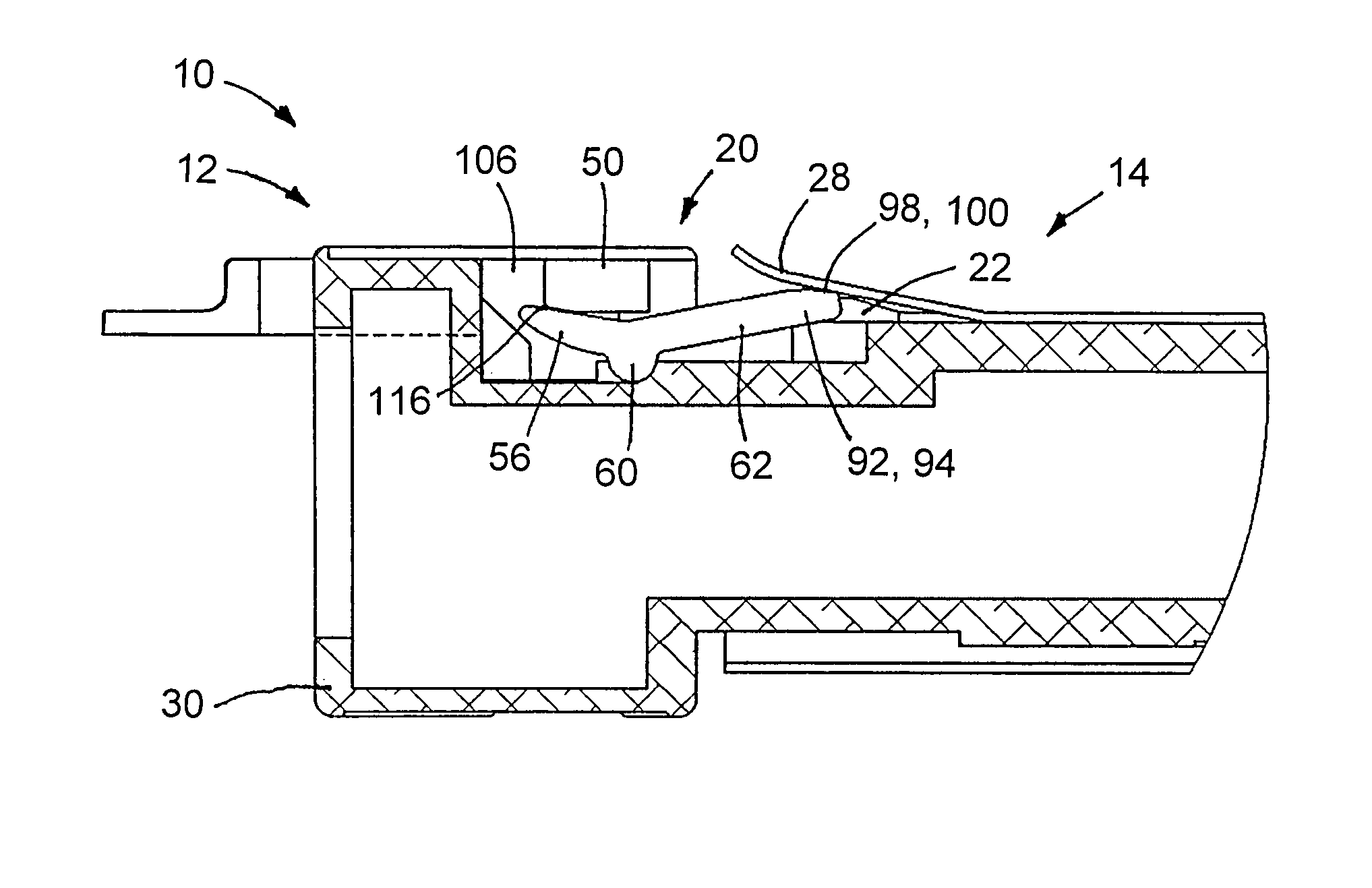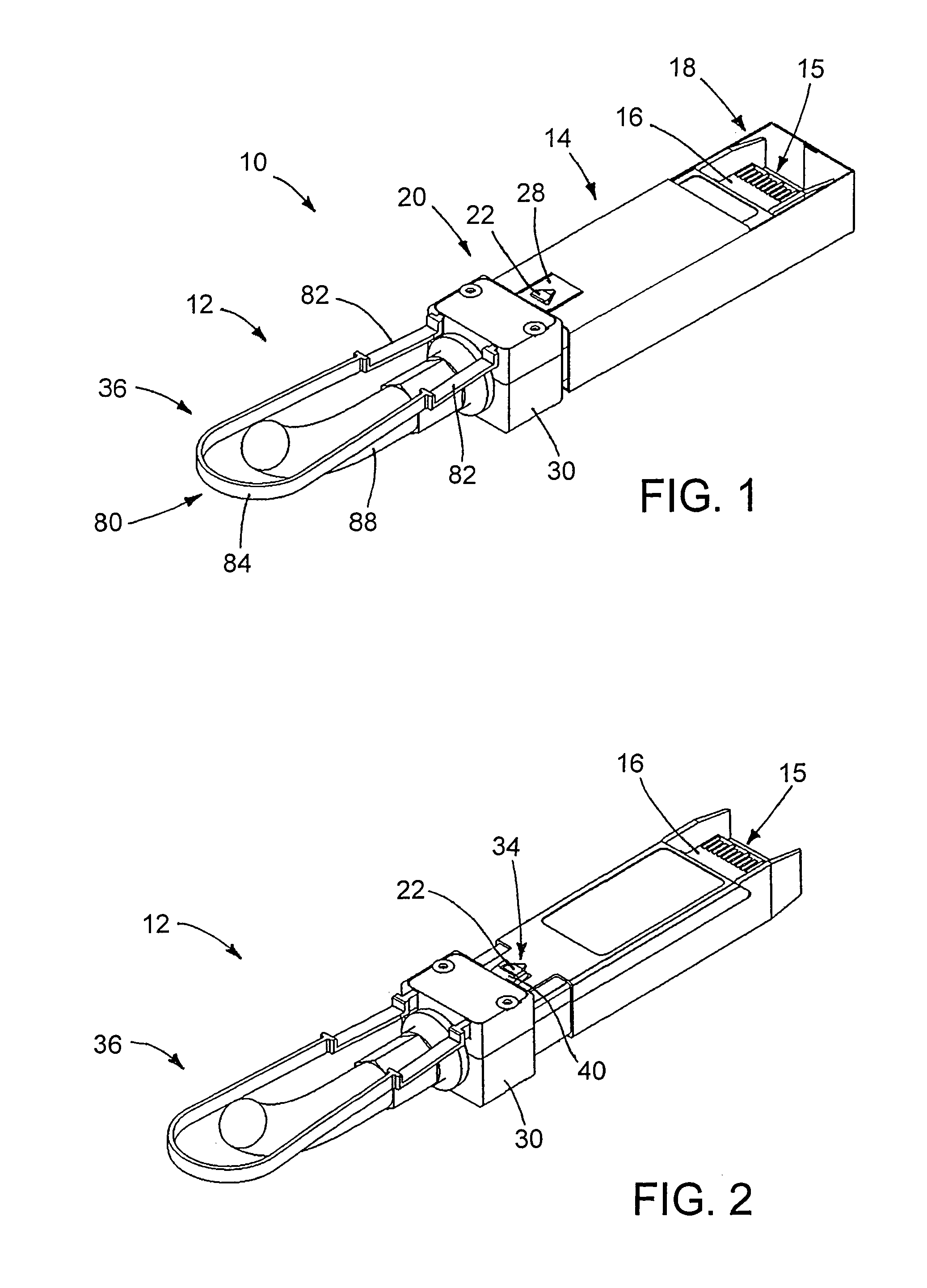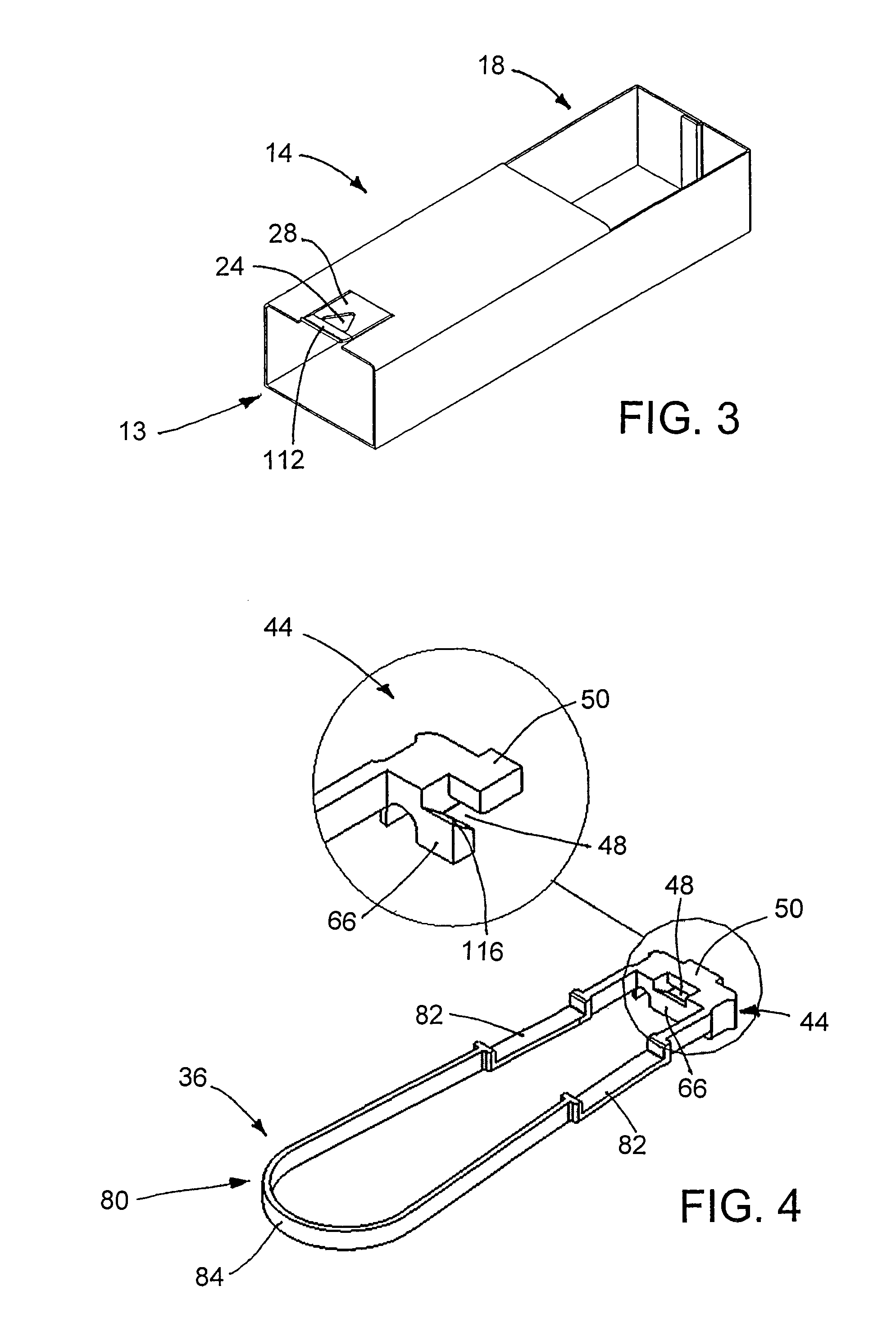Electrical cable connector latch mechanism
a technology of latch mechanism and electrical connector, which is applied in the direction of coupling parts engagement/disengagement, coupling device connection, electrical apparatus, etc., can solve the problems of undesirable movement of the connector from external loads, electrical problems, etc., and achieve the effect of preventing the disengagement of the latch mechanism, preventing the tilting of the rocker part, and simple push-pull operation
- Summary
- Abstract
- Description
- Claims
- Application Information
AI Technical Summary
Benefits of technology
Problems solved by technology
Method used
Image
Examples
Embodiment Construction
[0035]An electrical cable connector has a latch mechanism wherein the moveable portion is part of the mating receptacle, and the mechanism for unlatching resides in the cable connector. A rocker part is located such that one end extends under the resilient latch member and the other end has a surface which is made to rotate about a pivot point by an externally actuated ramp. The rotation of the rocker lifts the resilient member from its seat and releases the connector latch. The actuating ramp is spring loaded to return to its resting position which is the latched position; it is attached to a loop designed to allow a finger pull action to initiate latch disengagement. Forces and friction resistance is managed such that reliable single-hand operation is achieved, with push to engage and pull to disengage.
[0036]FIGS. 1-3 shows a mated electrical coupling 10 (FIG. 1) in which a male electrical connector (first connector or cable connector) 12 (FIG. 2) engages a female receptacle (seco...
PUM
 Login to View More
Login to View More Abstract
Description
Claims
Application Information
 Login to View More
Login to View More - R&D
- Intellectual Property
- Life Sciences
- Materials
- Tech Scout
- Unparalleled Data Quality
- Higher Quality Content
- 60% Fewer Hallucinations
Browse by: Latest US Patents, China's latest patents, Technical Efficacy Thesaurus, Application Domain, Technology Topic, Popular Technical Reports.
© 2025 PatSnap. All rights reserved.Legal|Privacy policy|Modern Slavery Act Transparency Statement|Sitemap|About US| Contact US: help@patsnap.com



